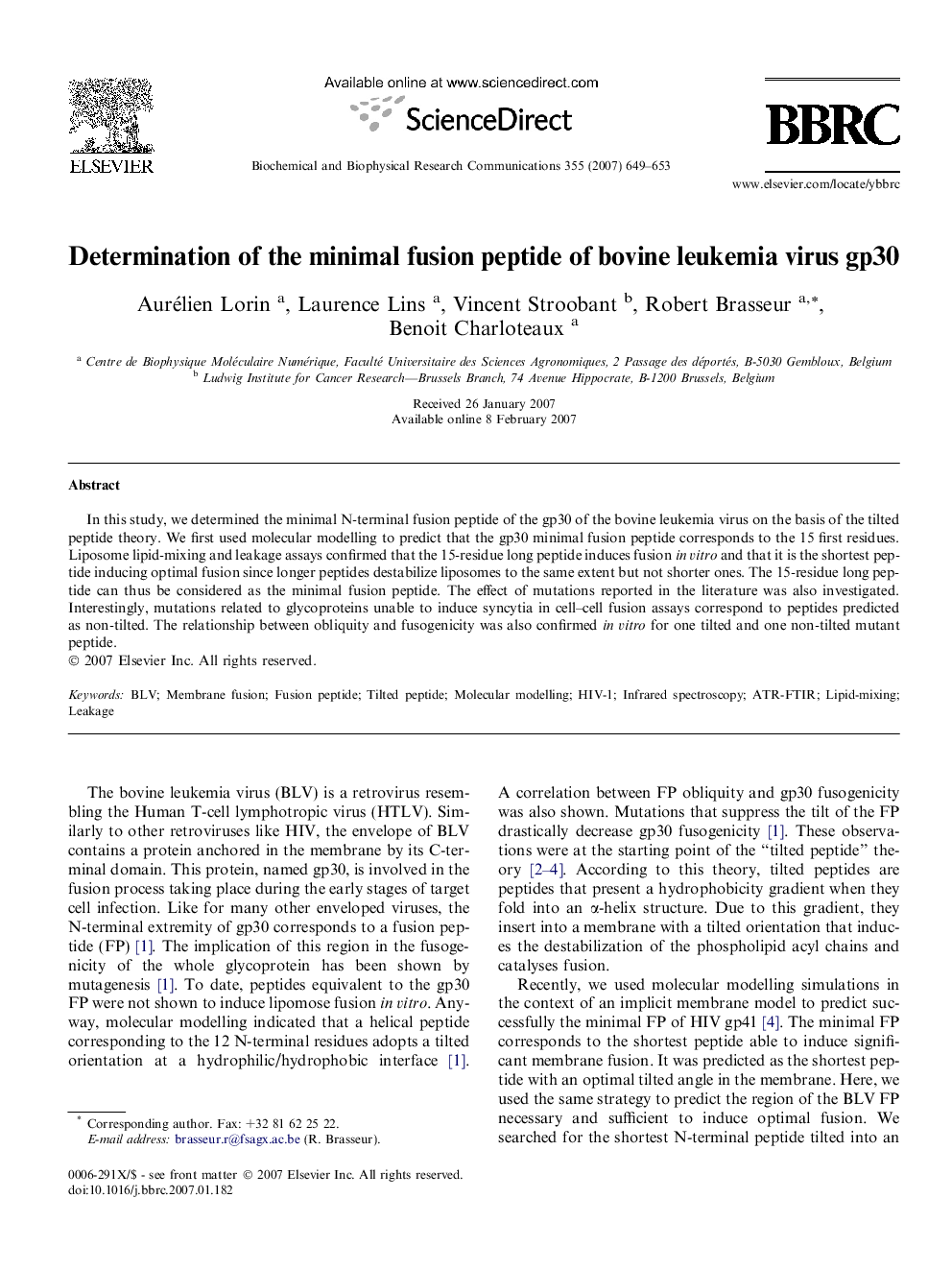| Article ID | Journal | Published Year | Pages | File Type |
|---|---|---|---|---|
| 1938877 | Biochemical and Biophysical Research Communications | 2007 | 5 Pages |
Abstract
In this study, we determined the minimal N-terminal fusion peptide of the gp30 of the bovine leukemia virus on the basis of the tilted peptide theory. We first used molecular modelling to predict that the gp30 minimal fusion peptide corresponds to the 15 first residues. Liposome lipid-mixing and leakage assays confirmed that the 15-residue long peptide induces fusion in vitro and that it is the shortest peptide inducing optimal fusion since longer peptides destabilize liposomes to the same extent but not shorter ones. The 15-residue long peptide can thus be considered as the minimal fusion peptide. The effect of mutations reported in the literature was also investigated. Interestingly, mutations related to glycoproteins unable to induce syncytia in cell-cell fusion assays correspond to peptides predicted as non-tilted. The relationship between obliquity and fusogenicity was also confirmed in vitro for one tilted and one non-tilted mutant peptide.
Keywords
Related Topics
Life Sciences
Biochemistry, Genetics and Molecular Biology
Biochemistry
Authors
Aurélien Lorin, Laurence Lins, Vincent Stroobant, Robert Brasseur, Benoit Charloteaux,
